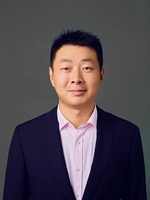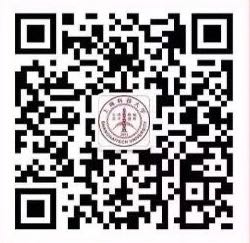
2008年7月,中国科学技术大学取得学士学位
2011年7月,中国科学院光电技术研究所获得硕士学位
2016年12月,美国亚利桑那州立大学电子工程系取得电子工程专业博士学位
2017年1月-2018年8月,美国亚利桑那州立大学电子工程系开展博士后研究工作
2018年9月,加入上海科技大学信息科学与技术学院,任助理教授、研究员
任豪博士围绕基于微机电系统的微型微生物燃料电池、超级电容器、无线传感、穿戴式哮喘传感器、压电血液粘度传感器、MEMS微镜、氧化物电子器件展开系统研究,取得了一系列研究成果, 发表期刊论文30余篇, 其中以第一作者或通讯作者论文16篇,发表于Nano Energy, Biosensors and Bioelectronics, Journal of Power Sources, Nanoscale, IEEE Transactions on Electron Devices, Applied Physics Letters, International Journal of Hydrogen Energy, Microfluidics and Nanofluidics, Journal of Micromechanics and Microengineering, IEEE Transactions on Power Electronics等期刊 (影响因子大于17的第一作者论文1篇,影响因子大于7.7的第一作者文章4篇)。在国际最顶级的微机电系统会议上以第一作者发表文章6篇(包括4篇IEEE MEMS年会,2篇IEEE Solid-State Sensors, Actuators and Microsystems Workshop会议)。任豪博士获得IEEE MEMS 2013的Best Poster Award Finalist奖。任豪博士应Wiley-VCH, Elsevier, CRC Press, Springer等出版商邀请,以第一作者发表著作章节5篇;应Advanced Energy Materials, Biosensors Bioelectronics, Small, Nanoscale, IEEE Journal of Emerging and Selected Topics on Power Electronics, ACS Applied Materials and Interfaces, Sensors and Actuators, ChemSusChem等杂志的邀请审稿超过60余次。
任豪博士提出的微型微生物燃料电池在2014年创造了微生物燃料电池领域电流与功率密度的世界纪录(2014年至今微生物燃料电池领域发表SCI文章超过3000篇),并于2016年成功将此纪录提高了超过3倍(目前此记录仍然保持)。同时,任豪博士在世界上首次提出了基于仿生控制微生物呼吸的微生物超级电容器,将微生物电化学技术的电流与功率密度提高一个数量级。
任豪博士围绕基于微机电系统的微型微生物燃料电池、超级电容器、无线传感、穿戴式哮喘传感器、压电血液粘度传感器、MEMS微镜、氧化物电子器件展开系统研究,取得了一系列研究成果, 发表期刊论文30余篇, 其中以第一作者或通讯作者论文16篇,发表于Nano Energy, Biosensors and Bioelectronics, Journal of Power Sources, Nanoscale, IEEE Transactions on Electron Devices, Applied Physics Letters, International Journal of Hydrogen Energy, Microfluidics and Nanofluidics, Journal of Micromechanics and Microengineering, IEEE Transactions on Power Electronics等期刊 (影响因子大于17的第一作者论文1篇,影响因子大于7.7的第一作者文章4篇)。在国际最顶级的微机电系统会议上以第一作者发表文章6篇(包括4篇IEEE MEMS年会,2篇IEEE Solid-State Sensors, Actuators and Microsystems Workshop会议)。任豪博士获得IEEE MEMS 2013的Best Poster Award Finalist奖。任豪博士应Wiley-VCH, Elsevier, CRC Press, Springer等出版商邀请,以第一作者发表著作章节5篇;应Advanced Energy Materials, Biosensors Bioelectronics, Small, Nanoscale, IEEE Journal of Emerging and Selected Topics on Power Electronics, ACS Applied Materials and Interfaces, Sensors and Actuators, ChemSusChem等杂志的邀请审稿超过60余次。
任豪博士提出的微型微生物燃料电池在2014年创造了微生物燃料电池领域电流与功率密度的世界纪录(2014年至今微生物燃料电池领域发表SCI文章超过3000篇),并于2016年成功将此纪录提高了超过3倍(目前此记录仍然保持)。同时,任豪博士在世界上首次提出了基于仿生控制微生物呼吸的微生物超级电容器,将微生物电化学技术的电流与功率密度提高一个数量级。
Note: * denotes co-first author and # denotes corresponding author.
1. 1. Yunping Niu and Hao Ren#, “A high efficiency standalone magnetoelectric energy converter based on Terfenol-D and PZT laminate,” Applied Physics Letters vol. 118, pp.044101(6 pages) 2021, (Impact factor: 3.971)
2. 2. H. Ren#, H.S. Lee, C.L. Gardner and J. Chae, “A quantitative extracellular electron transfer (EET) kinetics study of Geobacter sulfurreducens enriched microbial community reveals the transition of EET limiting step during biofilm growth,” International Journal of Hydrogen Energy vol. 46, no. 4, pp. 3124-3134, 2021, (Impact factor: 7.139)
3. 3. Zhihao Li, Yunfei Gao, Minkan Chen, Liang Lou# and Hao Ren#,“An AlN Piezoelectric Micromachined Ultrasonic Transducer-Based Liquid Density Sensor,” IEEE Transactions on Electron Devices, vol. 70, pp. 261-268, 2022, (Impact Factor: 3.221)
4. 4. Yunping Niu and Hao Ren#, “A miniaturized low frequency (LF) magnetoelectric receiving antenna with an integrated DC magnetic bias,” Applied Physics Letters vol. 118, pp. 264104 (7 pages) 2021, (Impact factor: 3.971)
5. 5. Haichao Cao, Xianzheng Lu and Hao Ren#, “An A0 Mode Lamb-Wave AlN Resonator on SOI Substrate with Vertically Arranged Double-Electrodes,” Journal of Micromechanics and Microengineering, vol. 32, pp. 095004(8 pages), 2022, (Impact Factor: 2.282);
6. 6. Sitao Fei and Hao Ren#, Temperature characteristics of a contour mode MEMS AlN piezoelectric ring resonator on SOI substrate, ” Micromachines vol. 12, pp.143(13 pages) 2021, (Impact factor: 2.89)
7. 7. J. Zhang*#, H. Ren*#, S. Jayasuriya, X. Tian and J. Chae, “The Biological Memory Effect on Microbial Fuel Cell Biosensor”; IEEE Sensors Journal, vol. 22, pp. 17698-17705, 2022, (Impact Factor: 4.325);
8. 8. Sitao Fei and Hao Ren#, Determining the Dose-Response Curve of Exoelectrogens: A Microscale Microbial Fuel Cell Biosensor for Water Toxicity Monitoring. Micromachines, vol. 13, pp. 1560 (13 pages) 2022, Impact Factor:3.523;
9. 9. Hao Ren#, “Further improving the current and power density of miniaturized microbial fuel cells. ” Frontiers in Mechanical Engineering, vol.7, pp.616179., (invited paper) 2021, https://doi.org/10.3389/fmech.2021.616179
10. 10. A. Hussain, J. Lee, H. Ren, and H.S. Lee#, “Spatial distribution of biofilm conductivity in a Geobacter enriched anodic biofilm. Chemical Engineering Journal (2021): 126544 (Impact Factor:13.27)
12. 12. Hao Ren#, C. I. Torres, Prathap Parameswaran, Bruce Rittmann and Junseok Chae, “Improved current and power density with a micro-scale microbial fuel cell due to a small characteristic length”, Biosensors and Bioelectronics, vol. 61, pp. 587-592, 2014. (Impact factor: 10.62)
13. 13. Hao Ren#, He Tian, Cameron L. Gardner, Tian-Ling Ren# and Junseok Chae, “A miniaturized microbial fuel cell with three-dimensional graphene macroporous scaffold anode demonstrating a record power density of over 10000 W/m3”, Nanoscale, vol. 8, pp. 3539-3547, 2016. (Impact factor:7.79)
14. 14. Hao Ren#, Soonjae Pyo, Jae-lk Le, Forrest S. Gittleson, Frederick C. Leung, Jongbaeg Kim, Andre D. Taylor, Hyung-Sool Lee and Junseok Chae, “A high power density miniaturized microbial fuel cell having carbon nanotube anodes”, Journal of Power Sources, vol. 273, pp. 823-830, 2015. (Impact factor:9.12)
15. 15. Hao Ren, Hyung-Sool Lee, and Junseok Chae#, “Miniaturizing microbial fuel cells for potential portable power sources: promises and challenges”, Microfluidics Nanofluidics, vol. 13, pp. 353-381, 2012.(Impact factor: 2.52)
16. 16. Hao Ren#, Siriram Rangaswami, Hyung-sool Lee, and Junseok Chae, “Enhanced current and power density of micro-scale microbial fuel cells with ultramicroelectrode anodes”, Journal of Micromechanics and Microengineering, vol. 26, 095016, 2016. (Impact factor: 2.282)
17. 17. Hao Ren, Fenggang Tao, Weimin Wang and Jun Yao#, “An Out-of-plane Electrostatic Actuator Based on Lever Principle”, Journal of Micromechanics and Microengineering, vol. 21, 045019, 2011. (Impact factor: 2.282)
18. 18. Hao Ren, Weimin Wang, Fenggang Tao and Jun Yao#, “A Bi-Directional Out-of-Plane Actuator by Electrostatic Force”, Micromachines, vol. 57, pp. 179-185, 2013. (Impact factor: 2.89)
19. 19. Hao Ren#, Chenming Jiang and Junseok Chae, “Effect of temperature on a miniaturized microbial fuel cell”, Micro and Nano Systems Letters, vol. 5, no. 1, pp. 13, 2017.
20. 20. Hao Ren, Jun Yao, Fangrong Hu and Chuankai Qiu, “Design and Analysis of a Novel Out-of-plane Actuator”, Journal of Micronanoelectronic Technology, vol.46 no.9, pp. 546-550.
21. 21. Hao Ren, Zugao Ni and Jun Yao, “A Micro Spatial Light Modulator Based on Leverage Principle”, Key Engineering Materials, vol. 483, pp. 137-142, 2011.
22. 22. Xu Zhang, Hao Ren, Soonjae Pyo, Jae-li Lee, Jongbaeg Kim and Junseok Chae, “A High Efficiency DC-DC Boost Converter for a Miniaturized Microbial Fuel Cell”, IEEE Transactions on Power Electronics, vol. 30, no. 4, pp. 2041-2049, 2015. (Impact factor: 6.15)
23. 23. Bipro Dhar, Hao Ren, Junseok Chae and Hyung-sool Lee et al., “High biofilm conductivity maintained despite change of anode potential in a Geobacter-enriched biofilm anode”, ChemSusChem, vol. 9, no. 24, pp. 3485-3491, 2016. (Impact factor:8.92)
24. 24. Hyung-sool Lee, Bipro R. Dhar, Junyeong An, Bruce Rittmann, Hodon Ryu, Jorge W.S. Domingo, Hao Ren and Junseok Chae, “The Roles of Biofilm Conductivity and Donor Substrate Kinetics in a Mixed-Culture Biofilm Anode”, Environmental Science and Technology, vol. 50, no. 23, pp. 12799–12807, 2016. (Impact factor:6.19)
25. 25. Jennie Appel, Hao Ren Mandy Sin, Joseph Liao and Junseok Chae, “Rapid bladder cancer cell detection from clinical urine samples using an ultra-thin silicone membrane”, Analyst, vol. 141 pp. 652-660, 2016. (Impact factor:3.97)
26. 26. Ran Wang, Wei Wang, Hao Ren and Junseok Chae, “Detection of copper ions in drinking water using the competitive adsorption of proteins”, Biosensors and Bioelectronics, vol. 57, pp. 179-185, 2014. (Impact factor:10.62)
27. 27. Bipro Ranjan Dhar, Junyoung Sim, Hodon Ryu, Hao Ren, Jorge W Santo Domingo, Junseok Chae, Hyung-Sool Lee, “Microbial activity influences electrical conductivity of biofilm anode”, Water Research, vol. 127, pp. 230-238, 2017. (Impact factor:11.23)
28. 28. Weimin Wang, Qiang Wang, Hao Ren, Wenying Ma, Chuankai Qiu, Zexiang Chen, and Bin Fan, “Electrostatic repulsive out-of-plane actuator using conductive substrate”, Scientific Reports, vol. 6, 35118, 2016. (Impact factor:4.37)
29. 29. W. Wang, W. Ma, Q. Wang and H. Ren, “Confocal mapping for multiple terminals”, Scientific Reports, v.6, pp. 36918 2016. (Impact factor:4.37)





 沪公网安备 31011502006855号
沪公网安备 31011502006855号


